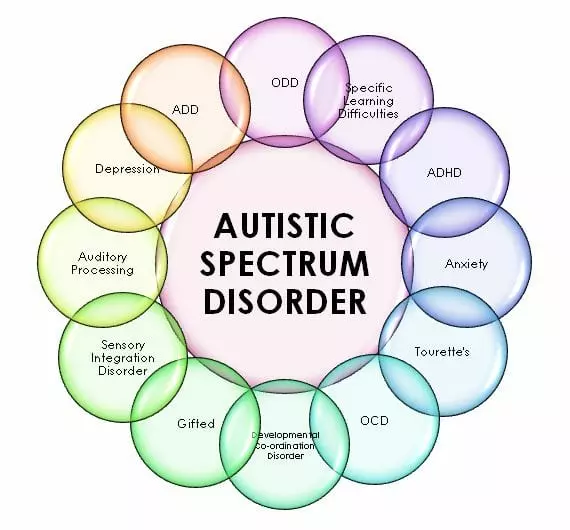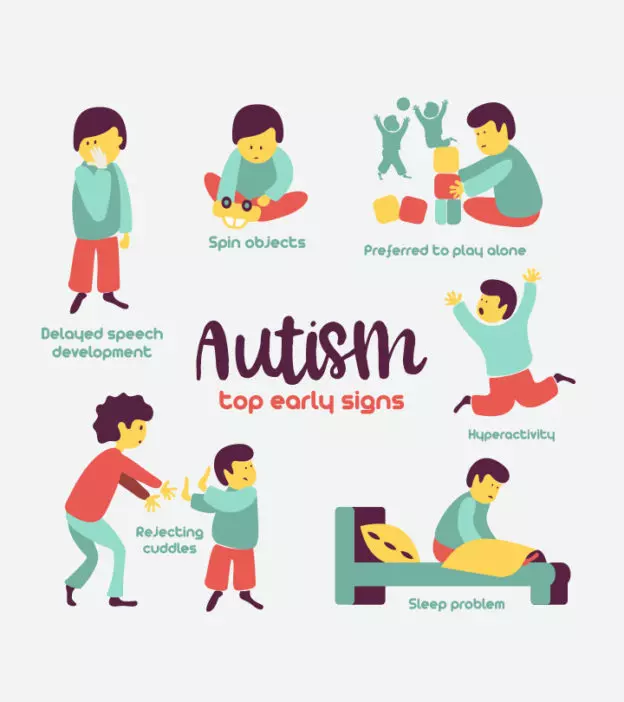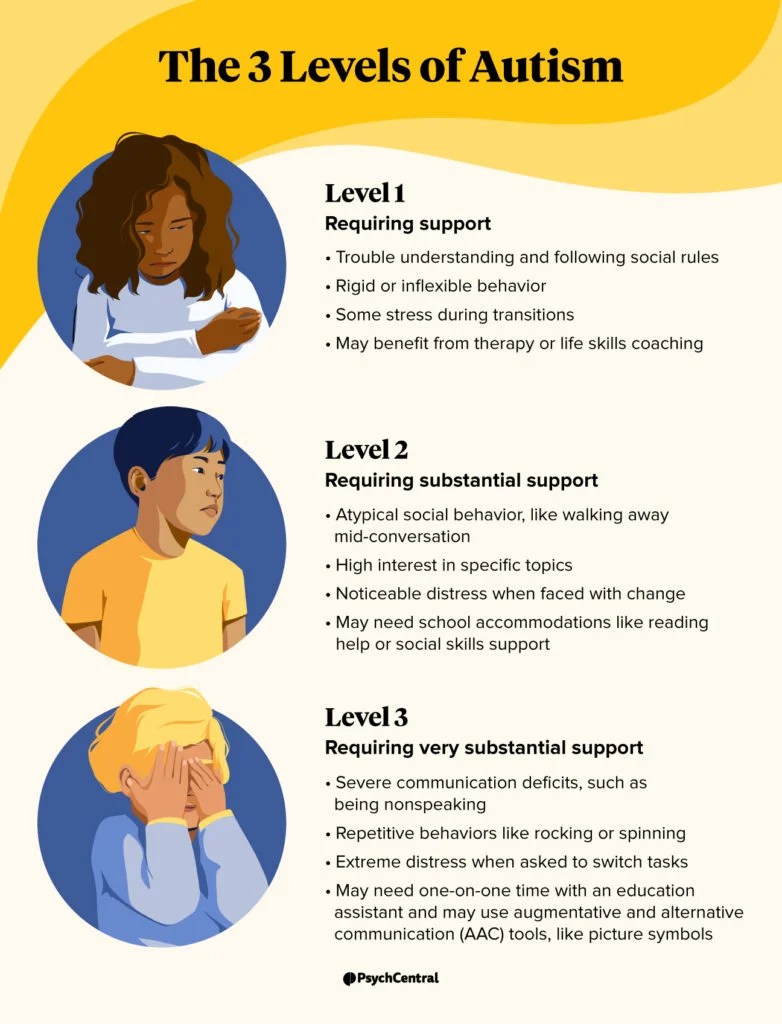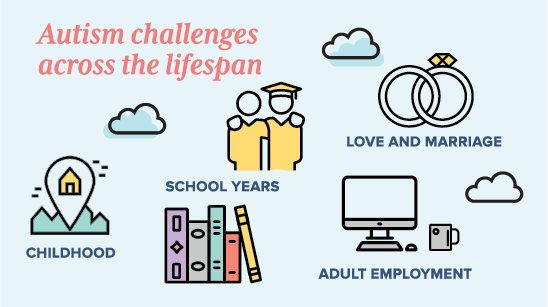Autism Spectrum Disorder Explained
April is Autism Awareness Month – a time for reflection and education about the condition of autism spectrum disorder (ASD) so that we can better understand and support those living with it. ASD affects approximately 1 in 59 children, making it incredibly important to become educated about its diagnosis, causes, symptoms, and treatment options. This blog post will shed light on all of these areas so families can gain insight into the concerns surrounding autism spectrum disorder and how they can best help their loved ones achieve success in life.

Overview of Autism Spectrum Disorder (ASD)
Autism Spectrum Disorder (ASD) is a complex developmental condition that affects communication, behavior, and social interaction. Symptoms typically appear early in childhood and range from mild to severe. Children with ASD may have difficulty with verbal and nonverbal communication, struggle with social situations, and display repetitive behavior patterns. Though there is no known cure for ASD, early intervention and therapy can significantly improve outcomes for those diagnosed. It is essential to understand that every individual with ASD is unique and may have a range of strengths and challenges. With support and understanding, individuals with ASD can lead fulfilling and meaningful lives.
Symptoms of ASD
Autism Spectrum Disorder (ASD) is a developmental disorder that affects social interaction, communication, and behavior. The symptoms of ASD can vary greatly but typically manifest in early childhood. Children with ASD may struggle to make eye contact, express themselves, and understand nonverbal cues. They may also display repetitive behaviors or movements, have a limited range of interests, and struggle with change or transitions. It’s essential for parents and caregivers to be aware of these symptoms and to seek professional help if they notice any signs of ASD in their child. While there is no cure for ASD, early detection and intervention can significantly improve outcomes for children with this disorder.
Diagnosis & Treatment of ASD
Autism Spectrum Disorder (ASD) is a complex developmental condition that affects communication, behavior, and social interaction. As a parent, receiving a diagnosis of ASD for your child can be overwhelming. However, early diagnosis and treatment can improve outcomes and help children with ASD achieve their full potential. The treatment for ASD varies depending on the individual’s needs and can include behavioral therapy, medication, and support from healthcare providers and community resources. It’s important to remember that each child with ASD is unique, and their treatment plan should reflect their needs. With early diagnosis and intervention, children with ASD can thrive and succeed in life.
Different Types of Autism
Autism spectrum disorder is a neurodevelopmental condition that impacts communication, social interaction, and behavior. The disorder affects people differently and can manifest in various ways, hence the term ‘spectrum’ Some of the different types of Autism include Asperger’s syndrome, characterized by social difficulties and repetitive behavior, and Rett syndrome, which mainly affects girls and leads to problems with movement and communication. Another type is Childhood Disintegrative Disorder, which involves a regression in developmental skills after normal development. Early diagnosis and intervention can significantly contribute to managing symptoms and facilitating positive outcomes for individuals with Autism.
Myths & Misconceptions Surrounding ASD
Autism Spectrum Disorder (ASD) is a complex condition that affects several aspects of an individual’s life. Unfortunately, there are many myths and misconceptions surrounding ASD that can make it challenging for society to understand and accept individuals with this condition. One of the most common misconceptions is that people with ASD lack empathy or cannot show it. However, people with ASD can feel emotions and struggle to understand or express them in ways others can easily recognize. Educating ourselves about the reality of ASD and challenging these myths is essential to create a more inclusive society where individuals with ASD can thrive.
Challenges Faced by Those with ASD
Autism Spectrum Disorder (ASD) affects one in every 54 children in the United States alone. While it is often seen as a developmental disorder, ASD can manifest in various ways, from difficulties with social interaction to sensory sensitivities. Those with ASD often face unique challenges when navigating a world that may not fully understand or accommodate their needs. Some common challenges that individuals with ASD may face include communication, sensory overload, and trouble with routine changes. However, with the proper support, resources, and understanding, those with ASD can thrive and live fulfilling lives.
To conclude, autism spectrum disorder is a complex neurodevelopmental disorder that affects three main areas: communication, behavior, and social interaction. It is necessary to understand the symptoms and types of Autism to help those living with this condition. With April being National Autism Awareness Month, it is more important to dispel myths surrounding ASD and recognize the challenges faced by those living with it. Acceptance and understanding are crucial elements in helping those with autism lead fulfilling lives. People need to know that Autism does not mean someone can’t do something; it just means they must find different paths or strategies to get there. By challenging ourselves to become more aware, we can create an inclusive environment for all persons affected by ASD. If you or someone you know is struggling with this diagnosis, never hesitate to seek professional support or help. Feel free to follow Ask Nurse Drea on all social media platforms for additional support and resources that guide how to manage long-term care for individuals living with an autism spectrum disorder.






